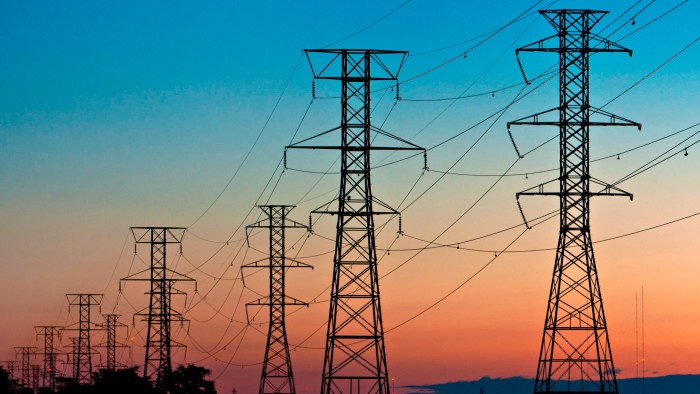Unlock the White House Watch newsletter for free
Your guide to what Trump’s second term means for Washington, business and the world
Like any politician, Donald Trump made a lot of big promises on the campaign trail. One that might be particularly hard to deliver was his repeated pledge to cut electricity prices in half within 12 months of taking office.
“Twelve months from January 20th . . . your electric bill, including cars, air conditioners, heating, everything, your total electric bill will be 50 per cent less. We are going to cut it in half and we have the power to do it,” he said in a speech at the Detroit Economic Club on October 10.
Cost of living pressures were a critical factor that propelled Trump back into the White House in January and would probably play a significant role in the congressional midterm elections next year. And with just over four months to go before the president’s deadline to slash voters’ power bills, electricity prices are rising at twice the rate of inflation and forecast to increase even higher, due in part to Trump’s energy policies.
US utilities requested a record $29bn in rate increases in the first half of 2025, more than double the previous year, according to a study by PowerLines, an energy affordability advocacy group.
Some of the reasons for the surge in electricity prices in the US are structural. A lot of the transmission infrastructure — poles, wires and transformers — that support electricity grids were built in the 1960s and 1970s and are in need of upgrading. About 70 per cent of transmission lines are more than 25 years old, according to the Department of Energy, and power producers and distributors must replace or upgrade them. These costs are typically passed on to businesses and consumers. Utilities say damage caused by severe weather events are also contributing to rising prices.
At the same time, electricity demand is booming after years of stagnation, due to the rollout of artificial intelligence data centres, electric vehicles and industrial projects. This is forcing utilities to invest in new generation, with capital expenditure expected to jump by more than a fifth this year to $212.2bn and hit a record of $228bn in 2027, according to Jefferies, an investment bank. Consulting firm ICF estimates this increased investment could push residential prices up by 15 to 40 per cent over five years.
“There is a lot the administration can do to avoid rate increases. The problem is they aren’t doing it,” says Rob Gramlich, president of Grid Strategies, a consultancy firm.
Indeed, Trump’s trade and energy policies are making the problem worse, warn analysts. The US president’s tariffs raise the costs of raw materials, components and equipment that support power grids because a lot of the kit is sourced from overseas. About 80 per cent of power transformers, which ensure the reliable transmission of electricity across power grids, are imported. Tariffs are increasing prices at a time when supply chains are already stretched due to surging demand, with prices up by more than two-thirds since 2019, says Wood Mackenzie, a consultancy.
Trump’s attacks on renewables, which are typically the fastest and cheapest sources of energy to deploy, will restrict new generation capacity. The administration’s decision to issue a stop work order on a nearly completed $1.5bn offshore wind farm off the coast of Rhode Island last week is just the latest in a swath of restrictions designed to stymie the industry.
The administration argues that fossil fuels, atomic energy and coal can provide the stable and reliable power required to meet soaring demand. But nuclear power plants take years to build and in many western countries have suffered severe cost overruns, while continuing to run coal power plants longer than planned is uneconomic. Recent orders by the administration blocking utilities and state regulators from retiring coal plants could cost ratepayers an extra $3bn a year, according to a report by Grid Strategies commissioned by Earthjustice, an environmental group.
Natural gas can play a role in meeting power demand but not quickly. Large gas turbines are in short supply, causing lead times for new orders to stretch out five years or more and the cost of gas-fired generation to triple since 2022, according to John Ketchum, chief executive of NextEra, one of the world’s largest electric utilities.
“If we become a one-trick pony, just leaning into gas-fired generation as our only option, only two things can happen: you’re going to build less [power capacity] and it’s going to be at a higher price,” he told the Financial Times in an interview in March.
jamie.smyth@ft.com
https://www.ft.com/content/689243af-865f-4330-a9bb-ce7a9a114f40


